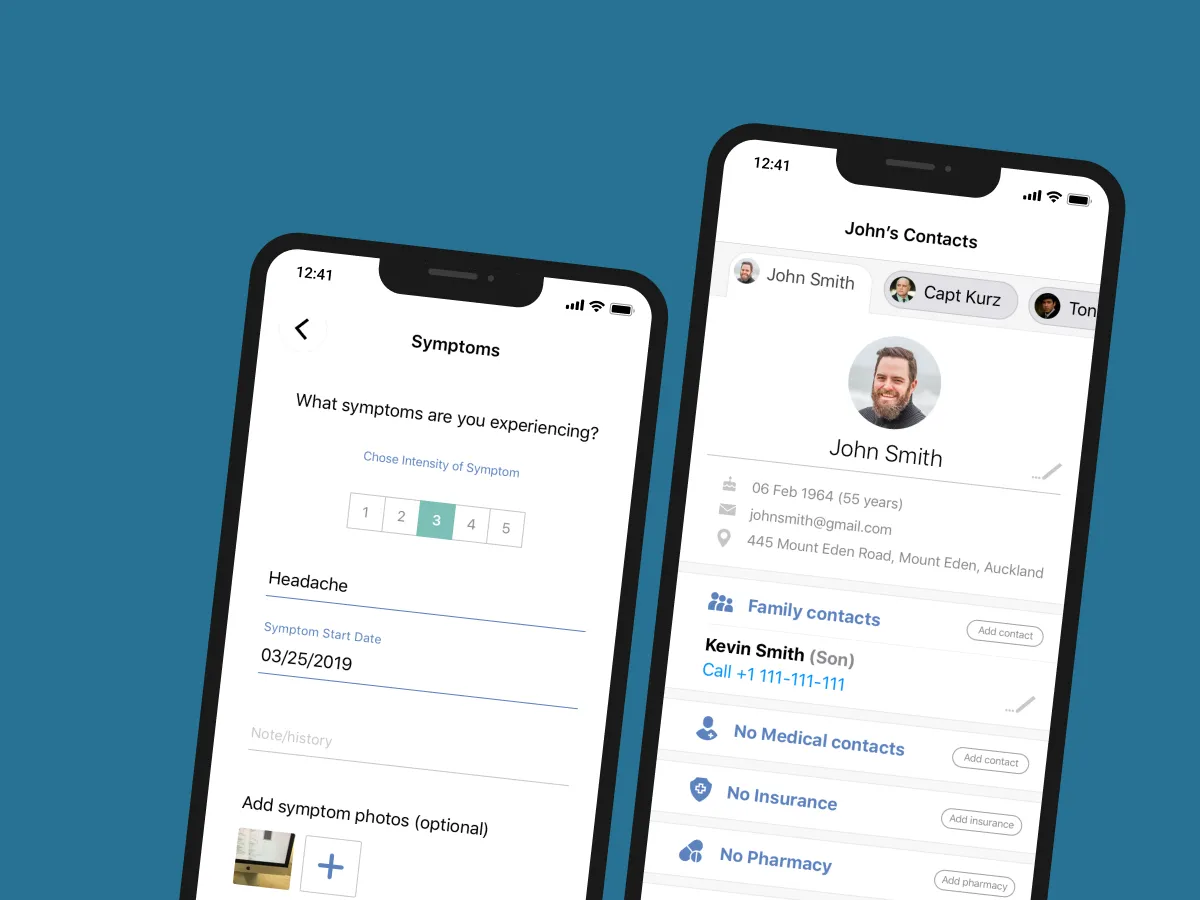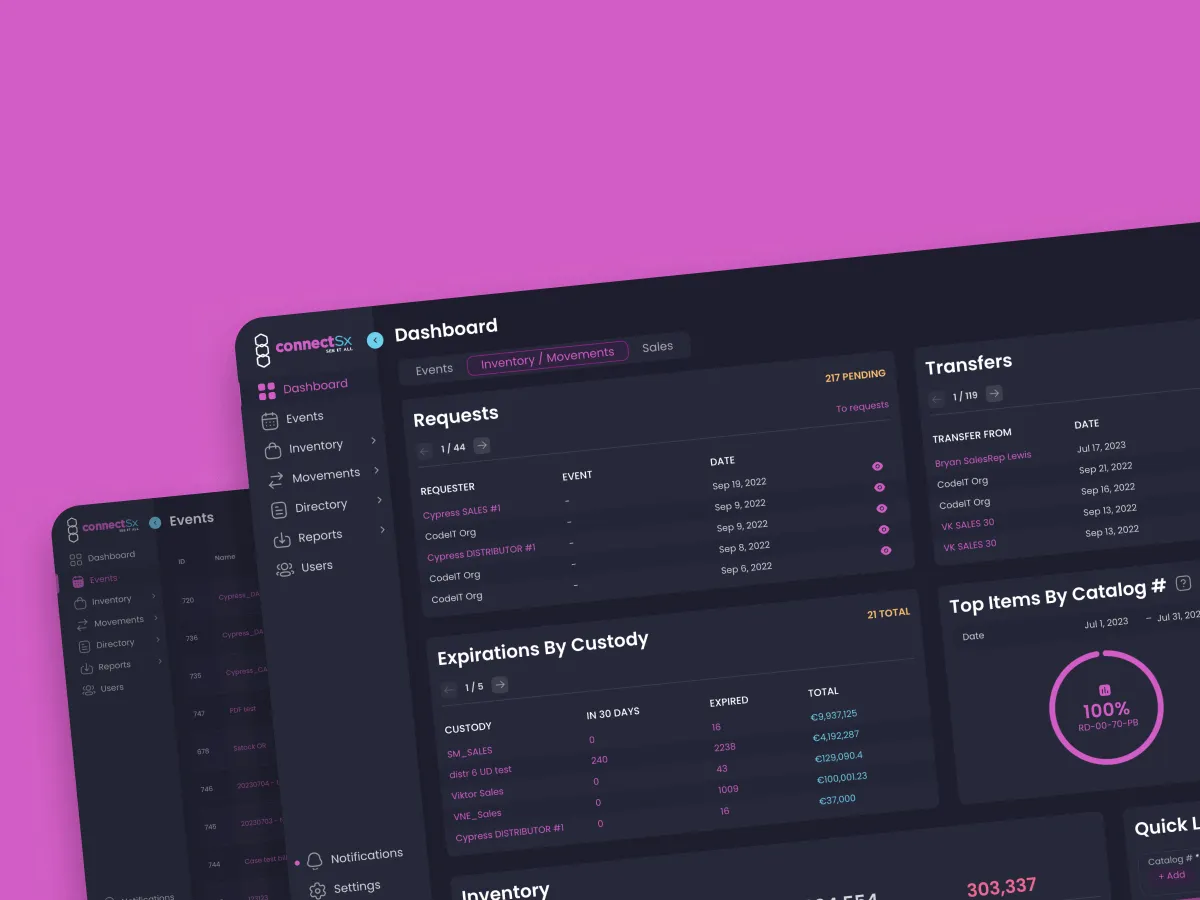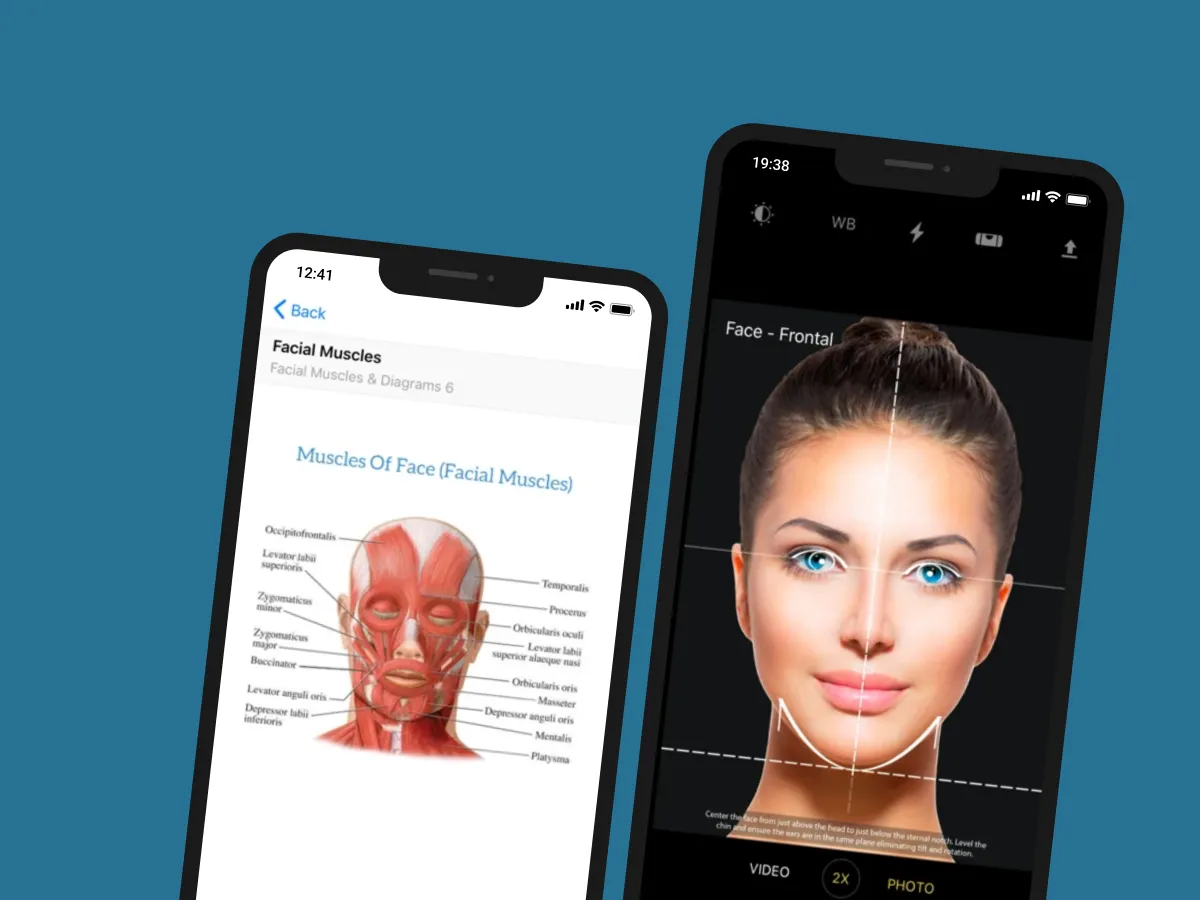Anytime Caring: P2P platform for high-quality elderly car
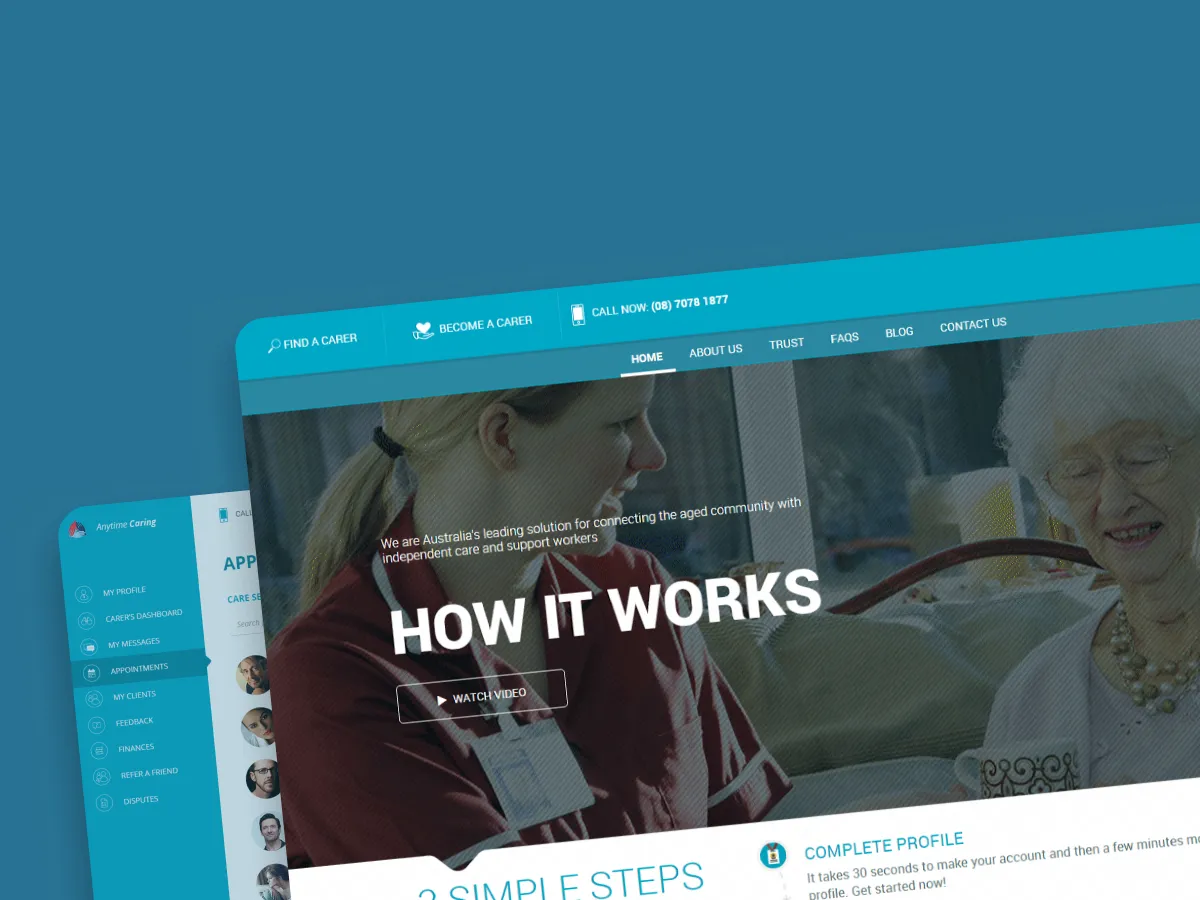
Industry
Healthcare
Location
Australia
Partnership period
2016 – 2018
Team size
8
Project information
Overview
Anytime Caring (ATC) is considered to be Australia’s leading peer-to-peer platform that allows independent care workers to connect directly with the aged community. Anytime Caring will facilitate and support the provision of high-quality elderly care.
The core system’s advantages are:
- Realtime messaging
- Calendar with appointment scheduler
- 1,000+ monthly users
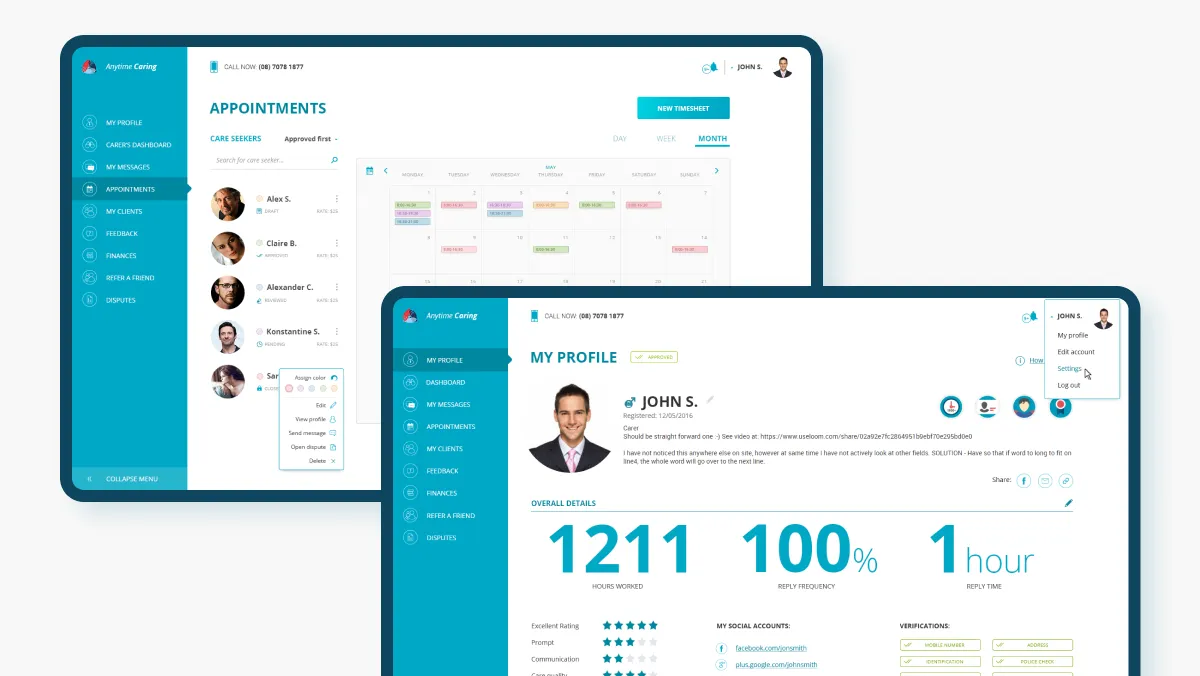
Our Task
The main idea of the system was to connect people who need some kind of care with people who can provide it. Our client wanted to help people find elderly care, nursing services, or domestic and social support. The system had to be easy-to-use as people of different ages were supposed to use it.
How exactly can this platform help? You can say that we faced the task of creating an UpWork-like system for the C2C industry. Basically, it has everything to make the search for the carer and further cooperation as smooth as possible.
For these purposes, the platform provides further functionality:
- Look through the full profiles of Carers (the general information, verification, ratings, services offered, qualifications, experience, availability, rates) and care seekers (personal information, services required, caring details, general information)
- Exchange messages with the person users want to work with, create and sign offers online
- Arrange appointments, share and control the schedule
- See the list of people users already work with and create a list of people users plan to work with in future
- Leave and receive feedback
- Make and receive payments, track the payment history
- Open a dispute with a person, if there are some troubles or misunderstandings during the cooperation
Embrace digital solutions to modernize your healthcare services

Business First
Code Next
Let’s talk
Implementation
User Roles
According to what the users were looking for at the ATC, we had to create several user roles:
- Guest. To explore the website and register if needed
- Carer. To provide the above-mentioned services
- Care seeker. To find the right care provider
- Admin. The all-mighty user
The functionality of the system differs depending on the user.
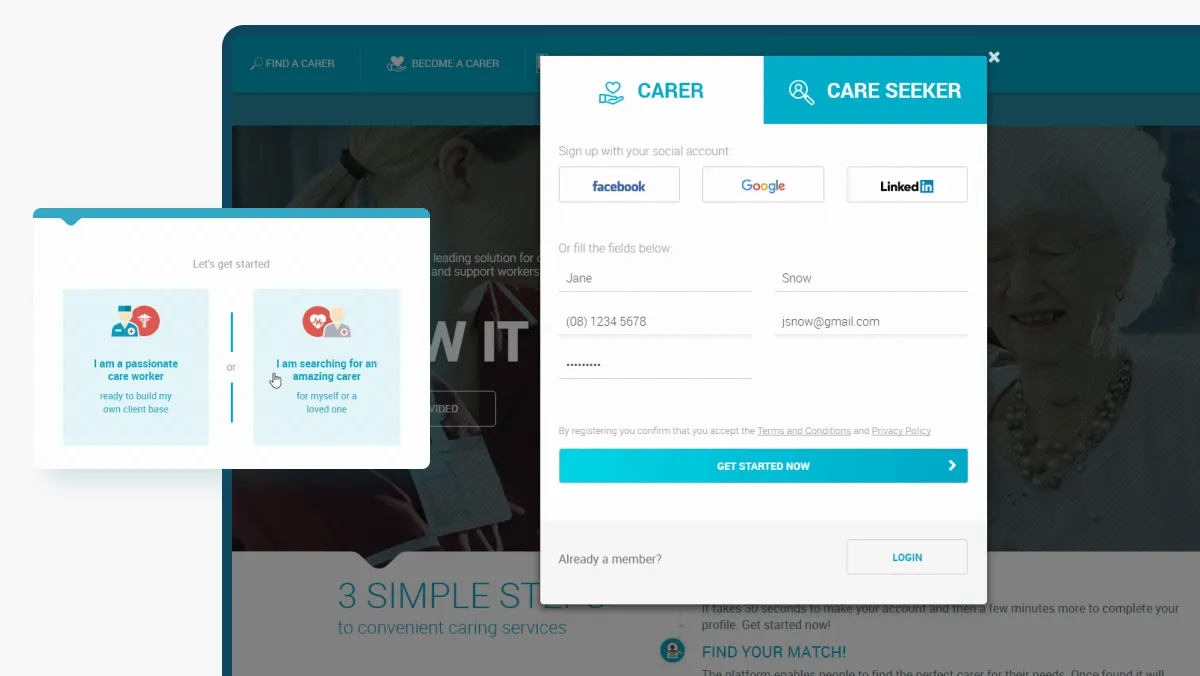
Guests
Before registering for the system, users need to understand what they are offered to use, so we made the website easy to access and the navigation user-friendly.
Users can search for the carer even in the guest mode using “Basic criteria” (choose general services, gender, location, and rate range) or “Advanced criteria” (specific services, indication of smoker/non-smoker, compatibility with pets, spoken language). In the results, the system shows all the carers who fit the chosen criteria, giving the ability to watch their profile with qualifications and skills information.
If the users decide to keep using the system and register as a carer or a care seeker, they have two ways of doing it—through the registration system or via the contact form. The registration system is integrated with the Facebook API, Google+ API, and Linkedin API, which gives guest users the opportunity to register through the existing accounts.
After the users register as carers or care seekers, they receive a range of different functionalities that give them the opportunity to find the appropriate person in several clicks.
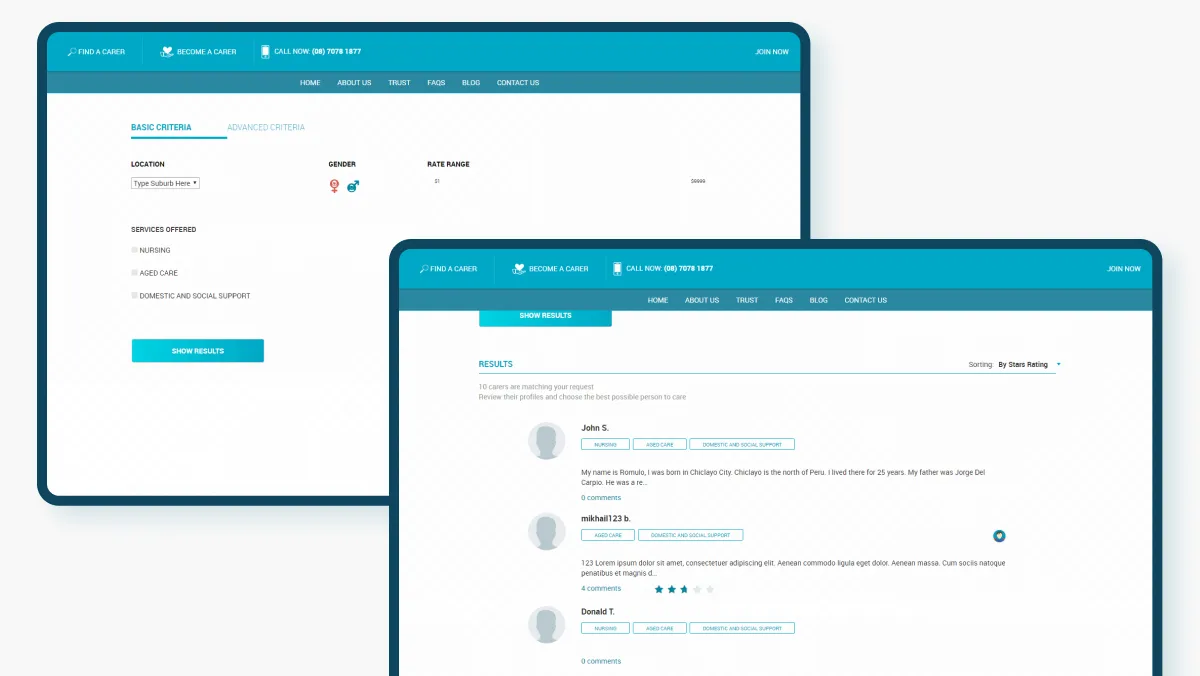
Carers and Care Seekers
The platform is, first of all, a tool for searching for specific services and establishing C2C relations, so both types of users had to be presented in the system. Each user has a personal account with a range of options that are indicated on the side panel, where Messaging is the main mean of communication between users.
Functionalities that are common for both types of users include:
- Personal profile. User can view and edit
- Dashboard. Collects your messages, appointments, statistics etc in one place
- Notifications. Sent to your profile, e-mail, and phone
- Communication. Messaging between carers and care seekers
- Appointments. Scheduling of work through agreements and contracts
- My clients / My carers menu. To see who you work with
- Feedback. Left in user’s profile with the ability to respond
- Disputes. Created by or against user in case of any misunderstandings or troubles
- Finances. Easy-to-use payment system
The personal profile contains the most detailed information that other users may require. The carer profile has certain sections: Personal information, services offered, qualifications and experience, availability, about me. The careers can edit, add, or delete the information anytime they want.
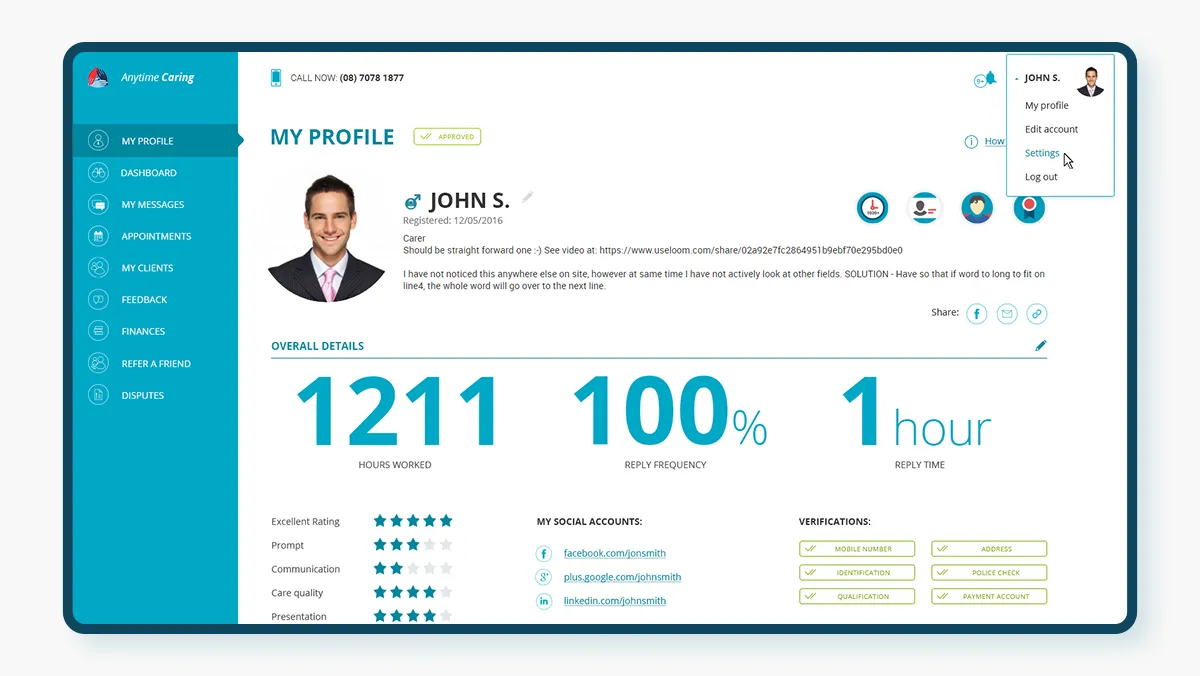
Differences
However, there were of course differences between the profiles that would ensure the usability and security of the platform.
- Only the care seeker can start the conversation with the carer and not visa versa. This prevents carers from spamming other clients.
- The carers can additionally optimize their profiles by adding photos, verifications, qualifications, and all the information that might be requested.
- The care seekers have the shortlist page—here they can save the profiles of the carers they might later contact.
- The new timesheet can be created only by the carer after both parties have agreed on the details. The carer sends the timesheet to the care seeker for review and approval.
- In the feedback section, the carer has two buttons: “by me” and “by care seeker.”
One of the best-created features is the appointments page. It shows both types of users their schedule, providing the ability to give different statuses to the appointments, separate them by colors, choose the view by the day, week, or month, edit, select by filters, send messages, etc.
Communication
Another important feature is the communication panel. Here, users can not only message each other but also send contracts and approve or decline them. When the care seekers accept the offer, they can see the personal details of the carer and vice versa. Both parties can settle all the important questions via this message board without the need for a personal meeting or tons of paper documentation.
Dispute
The Dispute process has several steps:
- Step 1: The dispute is created by a carer or care seeker for a certain job with the indication of the reason for this dispute. The limited time is given to solve the dispute without any third parties.
- Step 2: If not solved, the agent from ATC processes the request, sets up the meeting (phone call) for all the parties, analyzes the statements, and announces the ATC decision. If both parties find the decision for their issue and do not need to engage an ATC agent, then the person who opened the dispute can close it.
- Step 3: If not approved by both parties, the request goes to one of the arbitration centers and is reviewed and discussed by their representative.
The dispute system affects the invoices. If the dispute is closed, the upcoming invoice status becomes ‘on hold’ (no matter what status it had previously), and the care seeker approves the invoice according to standard flow. If there is already an upcoming invoice and a dispute is created, the ‘Approve’ button is disabled. If a dispute on the engagement is created, the status of the offer in the chat changes from ‘Accepted’ to ‘Disputed’. When the dispute closes, status changes back to ‘Accepted’.
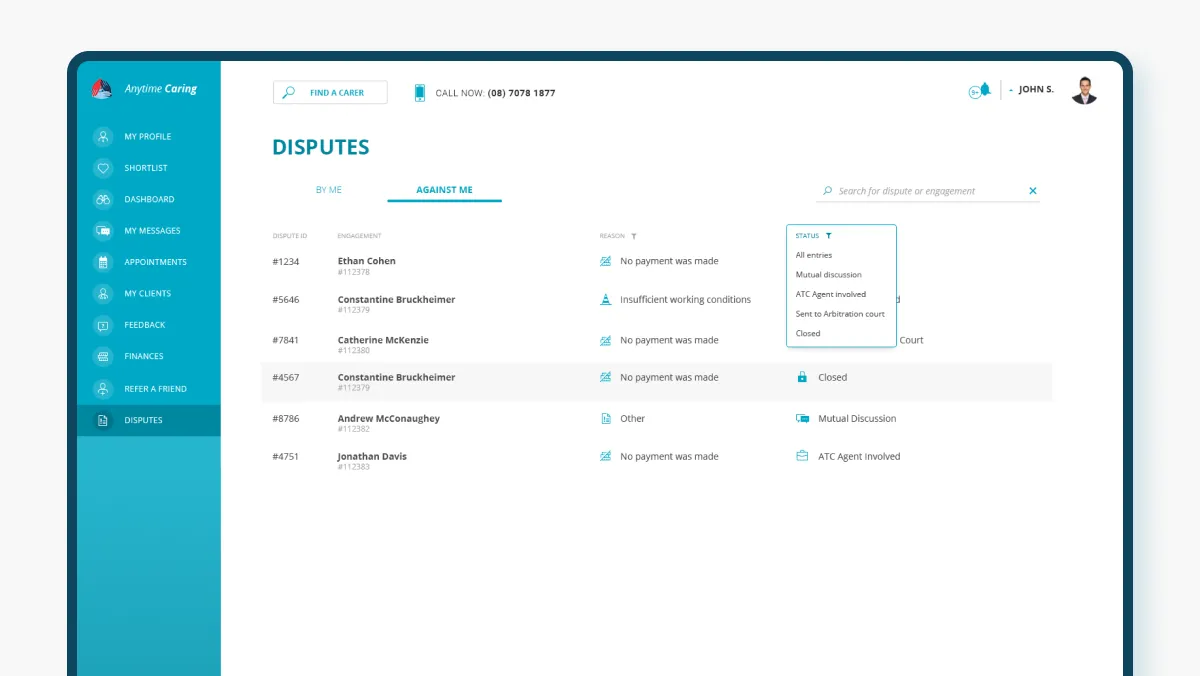
Result
Australia’s leading peer-to-peer platform for elderly care
We have created a whole platform specifically for the aged care industry, that gives people the opportunity to find or provide help. This system is aimed to connect people, give them the opportunity to find the services they need by the specific criteria, sign contracts, perform payments and share it all with friends without leaving the house. ATC has only just started, but they already have around 700 visits a month, and about 1000 people are registered to receive or provide services through the platform.
Services
- Web Development
- Quality Assurance
- UI/UX Design
- Project Management
- Business Analysis
Team
- Front-end developers
- Back-end developers
- UI/UX designer
- QA specialist
- Project manager
- Business analyst
Technology stack
- Zend 2 Framework
- PHP 7
- MySQL
- Twitter Bootstrap
- HTML5/CSS3
- JavaScript
- QA automation on Java and Selenium
- PayPal Pro API
- Google Maps API
- Facebook API
- Google+ API
- Linkedin API
- Addthis API
- Kleber (Datatools) API
- WebRTC API
- WYSIWYG editor
- Trulioo API
- Twilio API
Related cases
Explore related services
Business Analysis
Understand the problem, then create a detailed plan to build a successful solution.
Web Development
Build device-friendly platforms to guarantee a seamless experience for every user.
Architecture Consulting
Align your technology architecture with your strategic business direction.
Quality Assurance
Refine your app to perform reliably and efficiently in every scenario.

